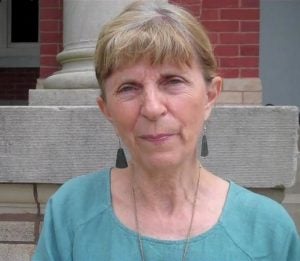Building Land While Balancing Historic and Cultural Effects
This is part four of the series “Building Land in Coastal Louisiana: Expert Recommendations for Operating a Successful Sediment Diversion that Balances Ecosystem and Community Needs.” See parts one, two and three.
“How a large sediment diversion along the lower Mississippi River is operated will determine the success or diminished benefit of such a very costly effort.”
Success will be defined by the goals and objectives that we set for these projects. The primary goal of any sediment diversion should be to build and sustain wetlands; but secondary objectives that address the needs of the ecosystem, fish and wildlife species, and the people who live, work and play in coastal Louisiana are just as important to define up front and in coordination with stakeholders and natural resource agencies. The operation recommendations in this report sought to develop strategies that balance these objectives.
To achieve land building at a scale that warrants the investment – and to ensure we don’t have diminishing benefits – means that there will be associated effects to diverse fisheries, the various communities and the different users – navigation, recreational activities, commercial fishing, etc. Not only must the diversions’ benefits be measured as they are operated, but also the highest quality science must be used to conduct research on wildlife and fish species, natural resource users and the associated economic effects. Key baseline data is needed prior to the beginning of diversion operations to help understand the effects the diversion will have on these resources and communities.
We must also collect data continuously throughout the diversion construction and operations process, but this data shouldn’t all come from universities and government agencies. So many of south Louisiana’s residents have decades of daily knowledge of the coast. They can recant stories of land loss, understand water movement and describe the life histories and habitat use of fish and wildlife species. Incorporating this traditional ecological knowledge (TEK) into our modeling and monitoring efforts to develop and inform operation plans are critical.
Lastly, the most successful outcomes will only be achieved by acknowledging the effects on users and residents and utilizing significant efforts to understand and mitigate those effects in close coordination with those affected. If these efforts are done in respectful partnership with the residents and users of Barataria Bay, the diversions will have the best chance of success without delay and Louisiana’s famed cultural ways will continue.
Stay tuned for the next post in the “Building Land in Coastal Louisiana” diversion operations series!
For more information about the Sediment Diversion Operations Expert Working Group’s key recommendations, visit http://www.mississippiriverdelta.org/diversion-ops-report/.
Shirley Laska, PhD, is Professor Emerita of Sociology at the University of New Orleans where in 2002 she created the Center for Hazards Assessment, Response and Technology (UNO-CHART), a center that has developed collaborative approaches to reduce communities’ vulnerability to natural and technological risks and trained over 100 masters and PhD students in such applications and community engagement. Recently she co-founded the Lowlander Center, a non-profit organization which helps coastal Louisiana communities and their residents build capacity and resilience for place and people in the context of challenges such as climate change, coastal land loss and technological hazards such as the BP oil spill. Author and co-author since Hurricane Katrina of over 20 peer-reviewed journal articles, as well as a book, book chapters and reports focused principally on hurricane and climate change resiliency response, she pursues these objectives both “within the levees” in the urban setting (post-disaster gentrification) as well as in the rural areas of coast Louisiana (community resettlement of Isle de Jean Charles). She is a member of the Sediment Diversion Operations Expert Working Group and co-author of their report, “Building Land in Coastal Louisiana: Expert Recommendations for Operating a Successful Sediment Diversions that Balances Ecosystem and Community Needs.”
